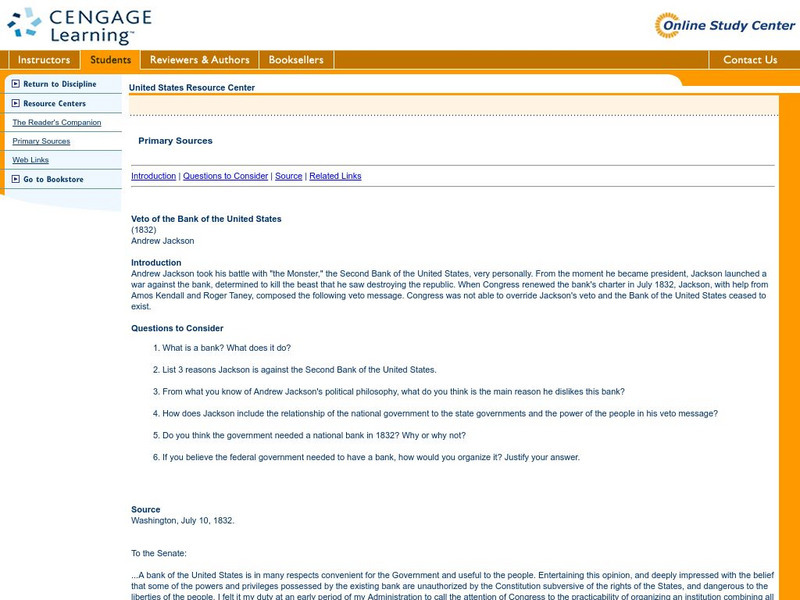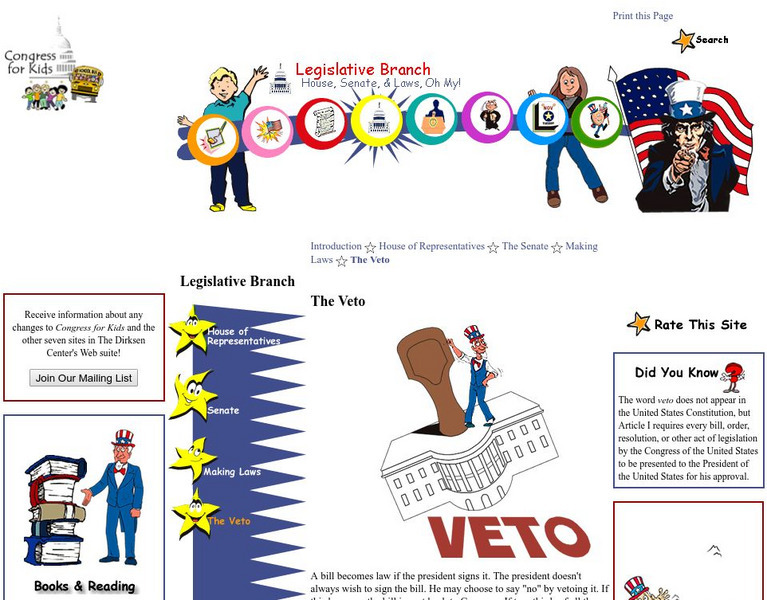Curated OER
I'm Just a Bill
Fourth graders study the three branches of government and the process of how a bill becomes a law. They watch the School House Rock video "I'm Just a Bill" and sing the song after viewing the video. They answer question regarding a bill...
Curated OER
Constitution Worksheet
In this U.S. Constitution instructional activity, students respond to 63 short answer questions about Articles I-VII of the American plan for government.
Curated OER
America: Influenced by the Enlightenment
In this Enlightenment influence study guide worksheet, students read 5 quotes from the Declaration of Independence and the U.S. Constitution and then respond to 5 reflection questions.
Curated OER
Chapter 5 – Ancient Rome
In this Roman Empire worksheet, high schoolers read assigned textbook pages regarding ancient Rome and respond to 60 short answer questions.
Curated OER
Citizenship Worksheet 3 - How the Government Works
In this government and citizenship worksheet, students learn the duties and responsibilities of the three branches of government and the system of checks and balances.
Curated OER
Worksheet #47 Questions - United States Presidential Terms
For this United States Presidential terms worksheet, students expand their knowledge on presidential duties and terms with ten fill in the blank questions.
Curated OER
5th Grade Social Studies Civics
In this social studies worksheet, 5th graders answer multiple choice questions about America, citizenship, Congress, and more. Students complete 25 multiple choice questions.
Curated OER
U.S. History Knowledge Test 3
In this U.S. history trivia activity, students answer twenty multiple choice questions based on their knowledge of U.S. history. This is an interactive activity.
Curated OER
America Influenced by the Enlightenment
In this influence of the Enlightenment on America study guide worksheet, students read the notes provided and add notes of their own regarding the frameworks for the Declaration of Independence and U.S. Constitution.
Curated OER
Math: Finding Surface Area
Eighth graders engage in hands-on activities to determine the surface areas of various objects. Using boxes, they cut them so they can lay flat and measure all the various shapes, which can be calculated and added together to equal the...
iCivics
I Civics: Mini Lesson: Veto Power
Explores the presidential veto and pocket veto powers, their role as a negotiating tool, and the Congressional veto override process. Students also learn how to use fact-checking and triangulation to evaluate news claims and detect...
US National Archives
National Archives: Congress at Work: Presidential Veto
The veto process is an integral part of our checks and balances. Introduce the power of the presidential veto and override to a class using an example from President Nixon's administration. Materials include the Constitution, worksheets,...
Other
President Gerald Ford's Veto of Railroad Retirement
Text of the message that President Ford wrote to the House of Representatives in 1974 stating his reasons for his veto of the Railroad Retirement Benefits Legislation.
American Presidency Project
American Presidency Project: Veto of the War Powers Resolution
Primary source document for students and teachers. President Richard M. Nixon's letter dated October 24, 1973, vetoing the War Powers Resolution.
Cengage Learning
Primary Sources: Jackson's Veto of the Bank of the United States
One of Jackson's major political battles was over the power of the Bank of the United States. This site gives a brief explanation of that issue, and the text of Jackson's veto of the bill which would support the bank. The site also...
Library of Congress
Loc: Law: War Powers
Find the reasoning behind the War Powers Act, passed over President Nixon's veto in 1973. Presidential actions taken during the Vietnam War were the impetus for Congress to make a declaration of war more codified. See the times...
The Dirksen Congressional Center
Congress for Kids: The Legislative Branch: The Veto
Learn about the President's power to veto a bill, and understand how Congress responds when this happens.
Social Studies for Kids
Social Studies for Kids: The Presidential Veto
The President of the United States has extraordinary power over the shaping of federal laws. He or she can veto any law passed by Congress.
US Government Publishing Office
Ben's Guide to u.s. Government: President's Legislative Powers
An easy-to-understand discussion on the actual legislative powers of the president and the veto. Includes related links.
Other
The Federalist Papers:convention, Constitution,& Debates
A clickable index of the 85 Federalist Papers. The text of each letter (paper) sent to New York newspapers in 1787 and 1788 is easily accessed.
iCivics
I Civics: Three Branches: Laws in Action
Embark on his WebQuest to follow the path an idea takes to eventually become a law. Read a short description regarding the role of each branch of government and then answer a follow-up question using the link provided.
Independence Hall Association
U.s. History: A Strong Presidency
See how Andrew Jackson handled his role as president and advocate of the common man. His using the spoils system had an altruistic beginning, but it soon became a function of corruption.
Shippensburg University
Shippensburg University: Weighted Voting Systems [Ppt]
This PowerPoint explains how a weighted voting system works and the notation and terminology used to discuss them.
The Dirksen Congressional Center
Congress Link: Lesson Plans
The Dirksen Congressional Center provides abundant lesson plans on all aspects of the US Congress and the US Constitution. All lessons contain time frames, objectives, and links to material, and are built around Bloom's taxonomy.
















